Do you require WHMIS training or perhaps you’re wondering what the WHMIS meaning of different symbols is? If so, this blog is here to help.
In this blog post we provide a visual guide and example of all the WHMIS symbols, explain what WHMIS is and why it is important, and what Safety Data Sheets (SDSs) are and why they are essential.
Click on each corresponding link to learn more about WHMIS meaning:
If you require WHMIS training, contact the professionals at ACUTE Environmental today! We have over 100 years of combined experience and we offer health and safety training, rescue services, and consulting services.
WHMIS Meaning Explained
1. Visual Guide and Examples
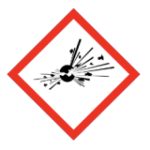
Exploding Bomb (WHMIS meaning: Explosion or reactivity hazards)
Description: This pictogram is used for materials or mixtures that can detonate or explode under certain conditions. It represents a serious physical hazard.
Example: Fireworks
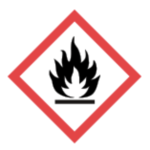
Flame (WHMIS meaning: Fire hazard)
Description: This pictogram represents materials that are flammable, including liquids, solids, and gases. It indicates the potential for fire or explosion.
Example: Gasoline

Flame Over Circle (WHMIS meaning: Oxidizing hazard)
Description: This pictogram represents oxidizing materials that are reactive to oxygen. They will generate a large amount of heat if they come into contact with oxygen, increasing the likelihood of a fire.
Example: Swimming pool chemicals (chlorine)

Gas Cylinder (WHMIS meaning: Gases under pressure)
Description: This pictogram represents compressed or liquified gases stored under pressure. It indicates the potential for explosion or other physical hazards.
Example: Propane tank
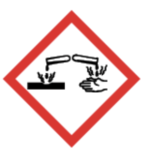
Corrosion (WHMIS meaning: Corrosive damage to metals, skin, and eyes)
Description: This pictogram is used for materials that can cause damage to metals, living tissues, or other materials through chemical reactions. It indicates the potential for corrosion or burns.
Example: Drain cleaner
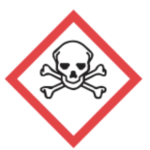
Skull and Crossbones (WHMIS meaning: Can cause death or toxicity with short exposure to small amounts)
Description: This pictogram is used for materials that can cause death or severe health effects through ingestion, inhalation, or skin absorption. It represents acute toxicity.
Example: Strong pesticide or poison
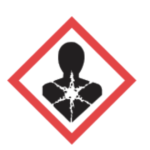
Health Hazard (WHMIS meaning: May cause or be suspected of causing serious health effects)
Description: This pictogram represents materials that can cause acute or chronic health effects. It includes hazards such as skin irritants, respiratory sensitizers, carcinogens, and toxins.
Example: Pesticide
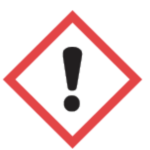
Exclamation Mark (WHMIS meaning: May cause less serious health effects or damage the ozone layer)
Description: This pictogram is used for materials that may cause less severe health effects or irritate the skin, eyes, or respiratory system. It also indicates hazards such as acute toxicity, skin corrosion, or eye damage.
Example: Cleaning solution

Environment (WHMIS meaning: May cause damage to the aquatic environment)
Description: This pictogram is used for materials that can cause harm to the environment, including aquatic organisms, soil, or air quality. It indicates potential environmental hazards.
Example: Toxic waste
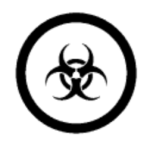
Biohazards Infectious Materials (WHMIS meaning: Organisms or toxins that can cause diseases in people or animals)
Description: This pictogram is specific to biological hazards, such as bacteria, viruses, or other microorganisms that can cause diseases in humans or animals.
Example: Medical waste container
Please note:
These are just examples, and various products can contain multiple WHMIS symbols depending on their hazardous properties. Always refer to the product labels and safety data sheets (SDSs) for accurate and specific information regarding the hazards associated with a particular product.
2. What is WHMIS and Why is it Important?

With WHMIS training, you will learn how to properly handle dangerous materials.
WHMIS Meaning: WHMIS stands for the Workplace Hazardous Materials Information System. It is a standardized system used in Canada to classify and communicate the hazards associated with hazardous materials in the workplace.
It was developed to provide workers with information about the hazards associated with the materials they encounter on the job and to educate them on proper safety procedures. As you have seen, WHMIS makes use of pictograms to represent specific types of hazards.
WHMIS is important for several reasons:
Hazard Communication
WHMIS ensures effective communication of information about hazardous materials to workers. It provides standardized labels, safety data sheets, and other relevant information to help workers understand the potential hazards of the materials they work with or are exposed to.
Worker Safety
WHMIS aims to protect the health and safety of workers by providing them with information on how to handle hazardous materials safely. It helps workers identify potential risks, implement appropriate control measures, and take necessary precautions to prevent accidents, injuries, and illnesses.
Legal Compliance
Compliance with WHMIS is a legal requirement in Canada. Employers have a responsibility to provide workers with the necessary information, training, and protective measures to ensure their safety when working with hazardous materials. WHMIS helps employers meet their legal obligations and avoid penalties for non-compliance.
Prevention of Accidents and Incidents
WHMIS plays a crucial role in preventing accidents and incidents in the workplace. Providing clear and standardized hazard information enables workers to make informed decisions, follow proper procedures and handle hazardous materials in a safe manner, thereby reducing the likelihood of accidents, spills, leaks, or exposures.
Now that we have a good understanding of what WHMIS is and why it is important, let’s consider Safety Data Sheets (SDSs).
3. What are Safety Data Sheets (SDSs)?

Ensure you understand how to read Safety Data Sheets while on the job.
In order to fully understand WHMIS meaning, you must also understand what WHMIS Safety Data Sheets (SDSs) are. Formerly known as Material Safety Data Sheets (MSDS), SDSs are comprehensive documents that provide detailed information about a hazardous substance or product.
It is an essential component of the WHMIS system and is used to communicate important safety-related information to employers, workers, and emergency responders.
SDSs contain key elements and information, such as:
- Product Identification: This section includes the product name, manufacturer or supplier information, and emergency contact details.
- Hazardous Ingredients: It lists the hazardous substances present in the product, including their Chemical Abstracts Service (CAS) numbers and concentration levels.
- Physical and Chemical Properties: This section provides information about the physical and chemical characteristics of the product, such as appearance, odour, boiling point, flashpoint, and pH.
- Fire and Explosion Hazards: It outlines the flammability properties of the substance and provides guidance on appropriate fire-fighting measures.
- Toxicological Information: This section details the potential health effects associated with exposure to the substance, including acute and chronic toxicity, routes of exposure, and symptoms of exposure.
- First Aid Measures: It provides guidance on immediate medical attention and appropriate first aid procedures to be followed in case of exposure or ingestion of the substance.
- Handling and Storage: This section offers recommendations for safe handling, storage, and disposal practices to minimize the risks associated with the substance.
- Personal Protective Equipment (PPE): It suggests the types of protective equipment (e.g., gloves, goggles, respirators) that should be worn when working with the substance.
- Accidental Release Measures: It provides guidance on how to respond to spills, leaks, or releases of the substance, including containment, clean-up procedures, and protective measures.
- Ecological Information: This section highlights the potential environmental hazards and ecological impacts of the substance, including its persistence, bioaccumulation, and potential effects on wildlife and ecosystems.
- Disposal Considerations: It provides information on proper disposal methods and any specific regulatory requirements for the substance.
- Regulatory Information: This section outlines relevant regulatory information, such as WHMIS classification, transportation regulations, and other applicable laws and regulations.
SDSs are crucial tools for hazard communication and provide comprehensive information about the potential hazards associated with a substance, as well as guidance on safe handling, storage, and emergency response.
About ACUTE Environmental
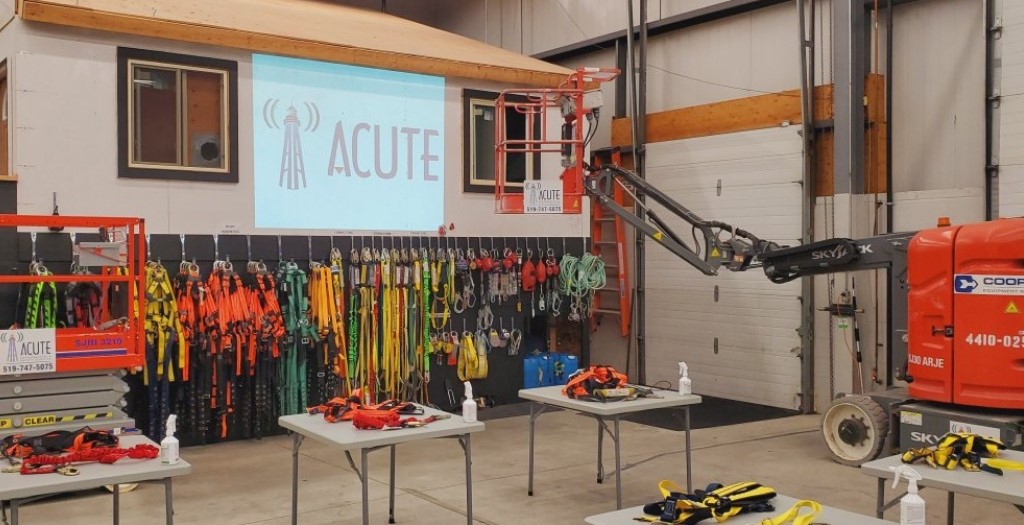
You can rely on ACUTE for WHMIS training!
If you are looking for high-quality online safety training or in-person safety training, book a course with ACUTE. Also, if you have any questions regarding what you need to assemble before safety training, contact us.
Here are some of the benefits of working with ACUTE:
- Open Door Instructor-Student Partnership – ACUTE’s training services emphasize client participation, staff foster relationships with clients and serve as a touchstone for advice anytime moving forward.
- Serving Your Team and Industry – With a vast array of clients in manufacturing, construction, health, academic, and government sectors, ACUTE brings the best safety practices from across the spectrum to your workplace.
- 100 Years Combined Experience – ACUTE provides comprehensive health and safety training, on-site safety services, and consulting services. With over 100 years of combined experience, our company staff offers more than theoretical or abstract ideas. ACUTE offers solutions!
- Track Record of Success – ACUTE is rated 4.9/5 stars on Google reviews, demonstrating a commitment to our clients, quality, and passion for training.
Take a look at our course calendar, and find a date that works for you! We offer courses such as:
- WHMIS 2015 (GHS)
- Advanced Working at Heights and Rescue
- Lift Truck Operator
- Elevating Work Platforms
- Confined Space Rescue
For a complete list of our training courses, click here.
Hours of Operation and Contact Information:
Monday-Friday: 8:00 AM – 5:00 PM
Saturday-Sunday: Closed
Phone: (519) 747-5075
Fax: (519) 747-4608
Email: info@acuteservices.com
What Our Customers Are Saying…
We were referred to ACUTE on behalf of our employer for an n95 mask fitting – the staff here are professional, personable, and informative.
I’d come back here for any safety-related training in a heartbeat.
Acute has been a staple in supporting my companies over the years and have always delivered quality and dependable service. Training programs are top shelf and a great facility for practical application. couldn’t recommend them more. keep up the great work folks.
Acute is recognized and respected as a people organization and they have been doing it right for a long time.

